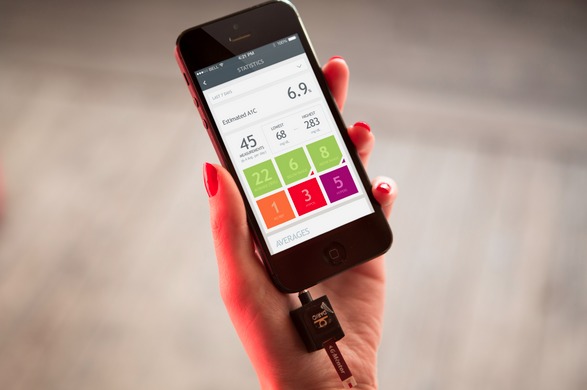The following is a guest post by Beth Kelly.
 In recent years, healthcare entrepreneurs have tapped into the latest tech developments to help people with chronic conditions improve the quality of their daily lives. Communication between medical devices, mobile apps, and home automation platforms enables diabetes patients to monitor and manage their condition in a variety of new ways. There’s been talk of systems for automatically delivering insulin to Type 1 diabetes for years, but modern technology and the “Internet of Things” are going to yield untold advantages for the diabetic community.
In recent years, healthcare entrepreneurs have tapped into the latest tech developments to help people with chronic conditions improve the quality of their daily lives. Communication between medical devices, mobile apps, and home automation platforms enables diabetes patients to monitor and manage their condition in a variety of new ways. There’s been talk of systems for automatically delivering insulin to Type 1 diabetes for years, but modern technology and the “Internet of Things” are going to yield untold advantages for the diabetic community.
Eating “Smarter”
Dietary management is imperative for all diabetic patients. But beyond merely accounting for caloric content, certain food apps allow shoppers to scan the barcode of products and probe a little deeper. Fooducate is one of the most helpful for diabetic people, as it examines the nutrient contents of the product and uploads the data into the cloud. The device will also recommend substitutions for certain ingredients, making traveling less of a pain. The app can even decode the names listed for different additives, and catch some of the deceptive tactics that food producers/marketing companies employ to deliberately deceive consumers.
Developers are currently working to create more advanced software for future apps, which will be able to send your food and lifestyle data directly to physicians in a consolidated “activity profile.” From this information, doctors hope to establish more accurate information about each individual patient, as well as chart larger trends in populations.
“Smart” fridges, a hot topic on the home automation front for years, are also futuristic solutions to some of the daily challenges of battling diabetes. There are already several refrigerators on the market with computer-like capabilities, which allow consumers to confirm the contents of their fridge remotely, plan shopping lists, and make sure nothing’s gone bad. The information stored by the “smart fridge” can be accessed online, and incorporated into the overall functionality of a smart home automation system. There has also been research done on several refrigerator prototypes that will provide additional nutritional and medical insight.
Better Connected
Today’s “smart home” automation systems are taking advantage of the latest tech developments and bringing homeowners closer than ever to their personal appliances. Even standard home products, like toilets, watches, and belts, are being brought “online” to monitor their wearer’s health metrics. While these tools are useful for anyone keeping a close watch on their health, they’re of particular interest to anyone following a diabetes management plan.
Home automation systems, offering a variety of options for alerts, can monitor everything from your home’s safety and security to its overall energy efficiency. While you monitor your heating and cooling bills – this resource can help – your home will also keep an ever-watchful eye on your blood sugar. Dexcom has developed a tool that can sync with your home system, and will alert you or a loved one to dangerous lows or drastic drops in blood sugar via a smartphone app.
New technology is also paving the way for innovations like the MyGlucoHealth Smart Blood Glucose Meter, a blood glucose meter that is equipped with BlueTooth. What this means is that the device is capable of recording and transmitting extensive data about a patient’s glucose level. Patients can review their own data from a portal online, and the device also provides users with a new way of transmitting data to their physicians. The interface is intuitive, and it can relay data in an emergency situation to care providers.
Communication between medical devices and home automation platforms can improve the quality of life for diabetes patients of all ages, and rapid advances in the “Internet of Things” promise to push medicine forward for future generations. Stay tuned for future updates!
